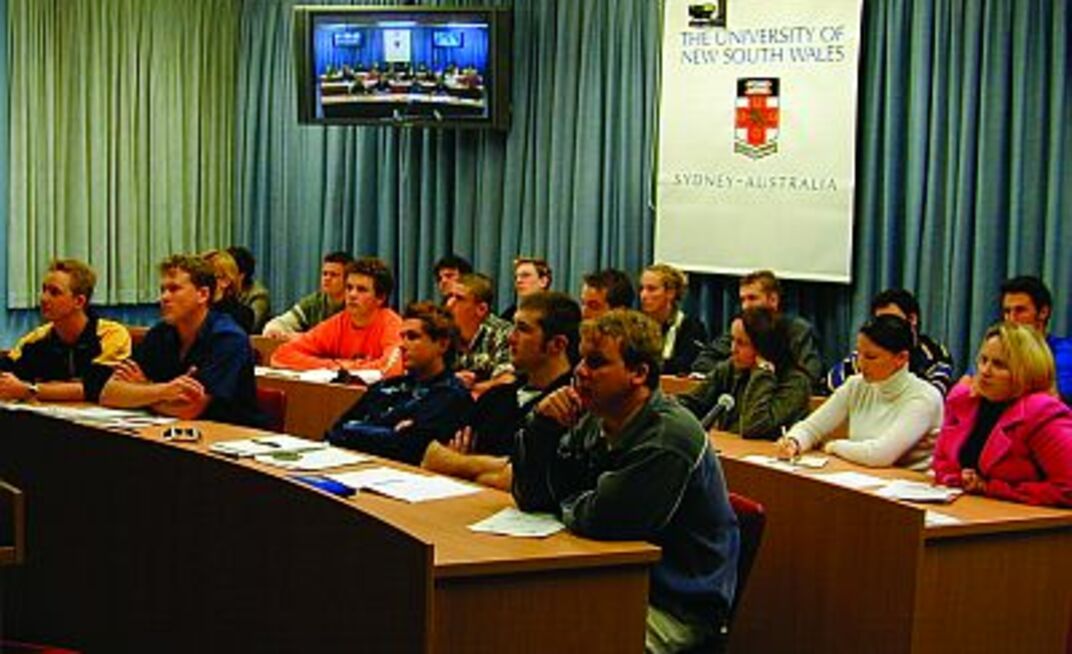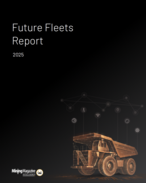The Australian mining industry is in the midst of a significant period of capital investment and growth. Many believe the appetite of China will ensure this growth continues for some years to come. With iron ore, coal, gold, copper and nickel prices all strong at present, there are many greenfield and brownfield projects in the pipeline. All of this has highlighted the growing problem of a lack of professionally trained engineers and scientists in the industry.
In 2000 the Minerals Council of Australia formed the Minerals Tertiary Education Council (MTEC) to study the existing level of enrolments in Australian Universities. In February 2003 MTEC produced a report which reviewed the fields of earth sciences, mining engineering and metallurgy. The results point to a grim picture for the professional capacity of our industry.
The report showed well over 1000 students enrolled in first year earth sciences in 2001 and 2002, each with the potential to become exploration or mine geologists. Of these, approximately 10% reach honours year and thus become suitably qualified to enter the industry. Is this enough for existing and new operations and, importantly, a sustainable level of exploration?
Mining Engineering graduation numbers were approximately 170 in both 2001 and 2002. Due to the impact of common first and, in some cases, second year engineering courses, it is difficult to forecast future graduation numbers from second and third year student numbers.
Based on first year enrolments in 2002, MTEC believes graduation numbers could be as low as 100 in mining engineering by 2006.
The field of metallurgical teaching proved complex to analyse. Some schools specialise in metallurgy, while others offer elective courses in third and fourth year via materials or chemical engineering. In the past three years Australian universities have produced about 100 graduates per year with the skills and education that would allow them to practice as metallurgists. Given that first year enrolments fell from over 200 in 2000 to about 150 in 2002, it would be reasonable to assume less than 100 graduates in metallurgy in 2006.
Couple these apparent declines in the number of undergraduates with a decline in post-graduate completions and the picture for higher level activities, such as fundamental research and development, is quite bleak.
The issues surrounding employee retention within both individual operations and the industry itself have been documented by many organisations. These issues range from the disruptive nature of fly-in/ fly-out rosters on peoples’ personal lives, to working in remote locations with restricted cultural, social and further education opportunities. The net result of these many and somewhat unique factors is that only a small number of professionals will spend a major part of their career working on remote sites. Some will be retained in the main cities in either head office functions or the engineering and services sector of the industry, but many will find other industries and be lost to mining.
Those that do stay are presently being “hunted” by other mining companies in an effort to staff new operations. A recent salary index study indicated contract rates for professions, from mine manager through to metallurgist, had increased by 20-50%, between September 2003 and March 2004. The net result is that some positions for more experienced engineers are proving extremely difficult to fill.
Two of the consequences of this general shortage are an inability to carry out on-site process improvement and optimisation projects and also a lack of time for professional development. Both factors will have a long-term impact on the viability of the industry.
Having recognised this problem, it is also obvious that there is no quick fix. We cannot instantly train professional engineers. However, we can better utilise the resources currently available, while groups such as the Australian Minerals Council look at longer term solutions to address these issues. In the meantime, three current possible sources of professional support are technology providers, cooperative research groups and industry sponsored training seminars.
Technology providers can be a useful source of technical expertise that might not be readily available in times of scarcity of professional resources. Three possible examples of where they could help are:
where specific experience is a key competency of a technology provider, use them to partner with mine owners and engineering companies to define flowsheets and process designs;
use them to provide full service maintenance contracts for the technologies they offer;
and use them to provide engineering design services or smaller brownfield expansion projects which incorporate their technology.
It is not difficult to imagine other areas where the experience and expertise of the technology provider could assist with either the day-to-day operation of a plant or its ongoing improvement.
Cooperative research centres such as the JKMRC, CSIRO or Ian Wark Centre are useful vehicles for looking at fundamental research projects. These centres typically have resources, which can be directed at specific site-based issues, to achieve a higher level of understanding of a particular principle. The centres also consistently attract overseas students to undertake postgraduate programs, thus increasing the professional capacity of our local industry.
Industry-sponsored training seminars are workshops organised to examine specific technical issues. The organisers might be bodies such as the AusIMM, with dedicated workshops attached to a conference, or technology-specific workshops organised by technology providers. In many cases, there can be a great benefit in improving the skills of para-professional people, such as plant operators via specific training seminars. Apart from increased productivity and greater job satisfaction, another benefit of having a more skilled operations team is that scarce professional resources can concentrate on higher-level tasks.
So, back to the question, will a lack of professionals restrict growth in the mining industry? The historical tenacity of the Australian minerals industry suggests we will find ways to better utilise the resources we have. It could, however, see a lowering of professional capability over time that will ultimately harm Australia’s position in the global minerals industry. It is important that we continue to make time for research and the ongoing training of our professionals if we want to maintain our ability to innovate and lead.
Outokumpu Technology is one of the world's leading developers and suppliers of technology for the minerals processing and metallurgical industries. The company designs and delivers plants, processes and equipment tailored for each customer's needs, and provides engineering, project and support services with its worldwide sales and service network.
* Andrew Okely is technical director of Outokumpu Technology Pty Ltd.
Australia's Mining Monthly
























